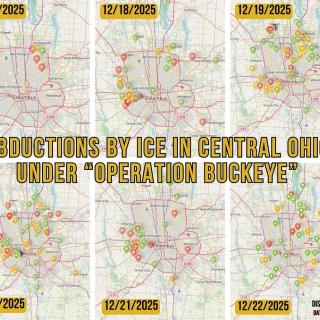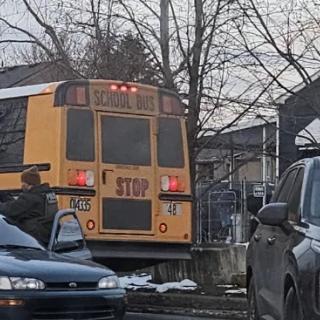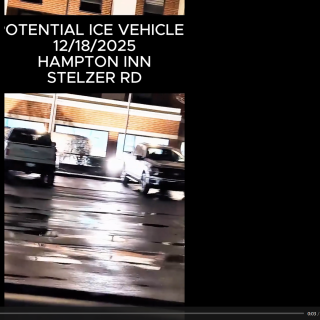Advertisement
This past October at the Columbus Italian Festival, those who drove to the festival had to find parking amidst the new Italian Village condo and apartment buildings which seemingly sprouted up overnight.
As revelers walked to the grounds of St. John the Baptist Italian Catholic Church, it was evident the transformation of the old neighborhood is full steam ahead in the Midwest’s last great boomtown. But some weren’t too thrilled with the new digs or the new parking ramps, which are going to be there for a long, long time, after all.
“Everything looks the same,” some told the Free Press.
“I find it hard to believe this is how long-time residents envisioned Italian Village,” said another.
Welcome to the new Italian Village and the new Weinland Park, its neighbor to the north. Both are on the comeback, and some are calling it a success story. Many long-time residents agree with this, but because the changes came so quickly and so unequivocally, some are left wondering what could have been.
“For me, I feel we went through stages of being a village, to becoming a neighborhood, to being a ‘hood, back to a neighborhood, to a community, and now an ‘area’,” says Weinland Park community activist La’Won Sellers.
At the beginning of this century City planners, such as former Mayor Michael Coleman, targeted these neighborhoods with help from private developers and Campus Partners for “revitalization.” City planners had declared both neighborhoods were in “poor condition” and “unattractive.” No doubt, there was an eye-opening amount of vacant land, deteriorating parking lots, abandoned homes and buildings. There were also brownfields, such as the former Jeffrey Mining site across the street from the Italian Fest and Columbus Coated Fabrics in Weinland Park.
“The Weinland Park Neighborhood Plan is a comprehensive and coordinated program to improve and enhance the quality of life for current and future residents. Its primary goal is the revitalization, rather than ‘gentrification,’” states the 2006 plan, which was authored by the Columbus City Council, the Department of Development and then-Mayor Coleman, who had also helped secure $30 million to renovate several hundred Section 8 units in the area.
Nearly two decades later, both housing units and population in both neighborhoods have made significant gains. For example, according to Neighbors For More Neighbors (Columbus) – who are supporting “housing policy reform that will increase residential density at all price points to give more diverse people the opportunity to call our historic and walkable neighborhoods home” – Italian Village from 2010 to 2020 has seen an increase of over 1,000 housing units. Its population has increased by 2,000 residents over this time, which is 1,000 residents less than in 1950, something density advocates, such as Neighbors for More Neighbors, like to harp on.
Weinland Park hasn’t seen such a dramatic increase in housing units, just 300 from 2010 to 2020, but new buildings are having their finishing touches applied and are about to sell or rent. Its population, however, has increased by nearly 2,000 residents over that time.
The Free Press has heard it before from high-end developers. Many of their developments are either feast or famine, and if they want to pig out at the buffet, a desirable neighborhood should be in the mix, such as the Short North, which is just a few blocks away.
“It was like the developers got a green light for Minecraft and they (apartments and condos) started popping up one after the other. And they all look the same,” says the 40-something Sellers. “I’ve lived in this area pretty much my entire life. I was kind of shocked to see the Weinland Park area transformed in such a fast time.”
Sellers, who sits on the University Area Commission, says his community activism began around 2010, when he started coaching a Weinland Park youth football team. He left the coaching job not long after to attend the one-year America VISTA program which trains activists to make positive change in their hometown neighborhood.
“I returned to basically serve,” said the husband and father. “And at that time, the community started going through a lot. So much money started being dumped into the area. But that term is aggressive. So, let’s just say much money was donated towards improving and vitalizing the area. And honestly, we needed it. Something the residents, from when I was kid, had been asking for.”
Sellers continues, “And to some degree, all the changes that have happened have made a lot of happiness and it’s also caused a great deal of sadness. We wanted the change, but we didn’t want the displacement to come with it.”
Some Weinland Park landlords during the early days of the transformation would sell a renter’s home without them knowing about it and give them 30 days to move, says Sellers. Homes these same landlords were barely taking care of, he adds. A few homes during the early days of the Weinland Park boom caught fire, albeit mysteriously, and burned down.
Landlords or homeowners were also given cash offers to purchase a home. But the owners didn’t want to sell for what amounted to a low-ball price. Soon enough, they were taken to court for not keeping their homes up to code, says Sellers.
“You get hit with all these fines to clean up the property, so they still had to pay. At the end of the day, they still lost their property,” he says.
Weinland Park has new migrants, so to speak. Young to middle-aged (mostly white) professionals and OSU students. These renters are coveted by the high-end developers who have transformed what some call the “Near North Side”. Sellers says the minimum rents in Weinland Park are now from $1,200 to $1,500.
Just how far will high-end developers (and sold-out City leaders) go to stack $1,500-renters on top of each other in tiny apartments near or in desirable neighborhoods? Bullying and boxing in a small church on East 7th Avenue directly across from the Kroger is one answer. Keep this in mind: The 2006 Weinland Park Neighborhood Plan stated its “primary goal” was to make “the community work together to address and fulfill their mutual interests, dreams, and aspirations. Neighborhood cohesiveness and desire to build a climate of sincere caring for one’s neighbors are major themes.”
The two-story 7th Avenue Community Missionary Baptist Church has been serving the Weinland Park community for over 50 years. A span of time dominated by poverty and the Short North Posse gang. These days, the church is about to be sandwiched by two non-descript and much taller apartment buildings (lower left picture above).
“I am a member of the 7th Avenue Church and lot of things went wrong with that,” says Sellers. “A lot of things were agreed upon with the church and then went in the opposite direction. I always felt like the hidden agenda was to move the church.”
Still under construction by Peerless Development, and directly right of the church, the student housing will be seven stories. The property falls under the boundary of both the University Area Commission (UAC) and the Weinland Park Community Civic Association (WPCCA).
It is commissions such as these that can help the community by persuading Columbus City Council certain developments are not a good fit for their neighborhood. And the grassroots Columbus Neighbors United against the 7th Avenue Development was urging them to do so.
But downright intriguing is how at that time both had commissioners who were either strongly aligned with Neighbors For More Neighbors, or former City employees who held senior positions in city neighborhood planning departments. These same commissioners then brought in a facilitator who was a former Campus Partners board member.
All of this was exposed by former Mayoral candidate Joe Motil in a 2021 Free Press article. The most underhanded move made by both the commissions, says Motil, was how the UAC commissioner at the time, Michael Wilkos, a key member of Neighbors For More Neighbors, was tasked to chair a WPCCA housing committee specifically for the Peerless Development.
Wilkos’s housing committee then voted unanimously in favor for a Memorandum of Understanding (MOU) with Peerless Development, or a formal agreement to go forward with the development. At this vote, one of the church’s deacons refused to go down without a fight.
“Gentrification has occurred in Weinland Park because people have been priced out of the neighborhood,” said Deacon Riley Goosby. “The 7th Avenue Church does not endorse the MOU because it is not seen in the best interest of 7th Avenue and the surrounding community that this is going to be a benefit. Minority and diversity is going to be kicked out the window. The MOU does not hit on the things that 7th Avenue thinks are important. This MOU was not done fairly and equitably.”
Motil also attended the vote, and notes that Wilkos is no longer on the UAC and is currently with the United Way of Central Ohio.
“I and many others in urban neighborhoods are tired of the City’s hard ball position on their new development and zoning policies. The City has basically told the public, we know what’s right for you and this is the way it’s going to be. Like it or not. You don’t have a say in the matter,” said Motil to the Free Press this week.



